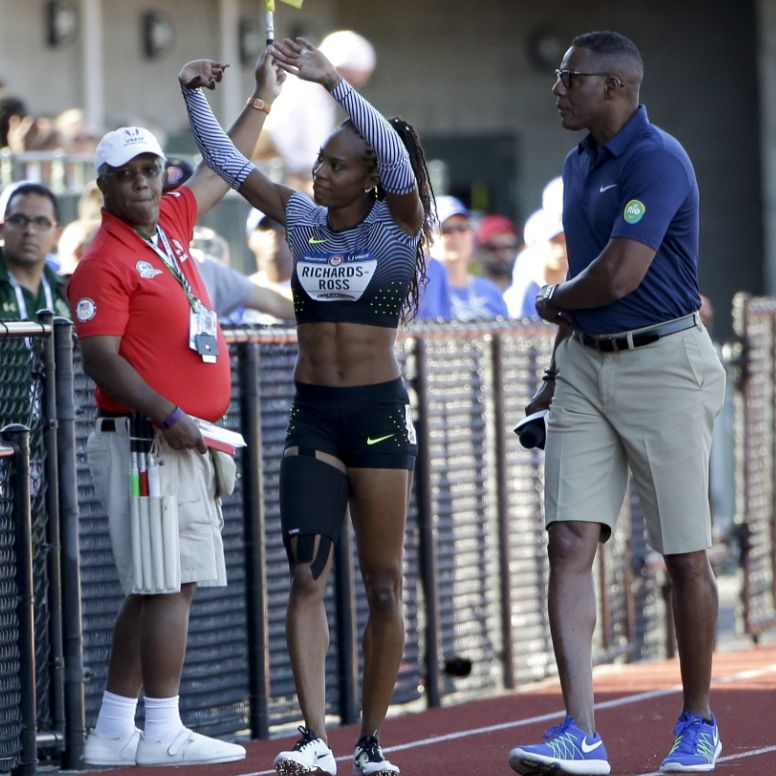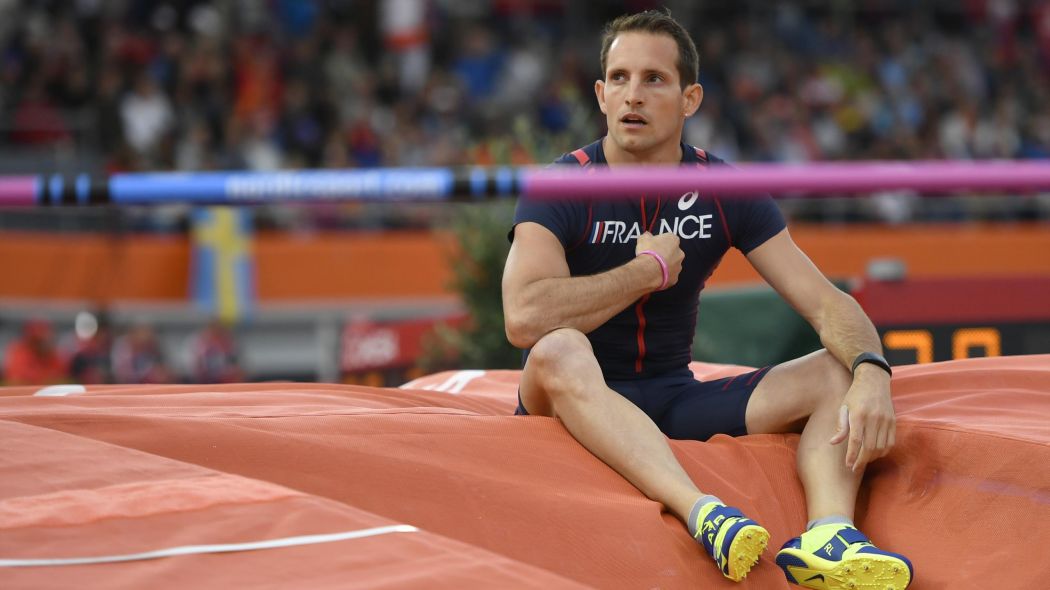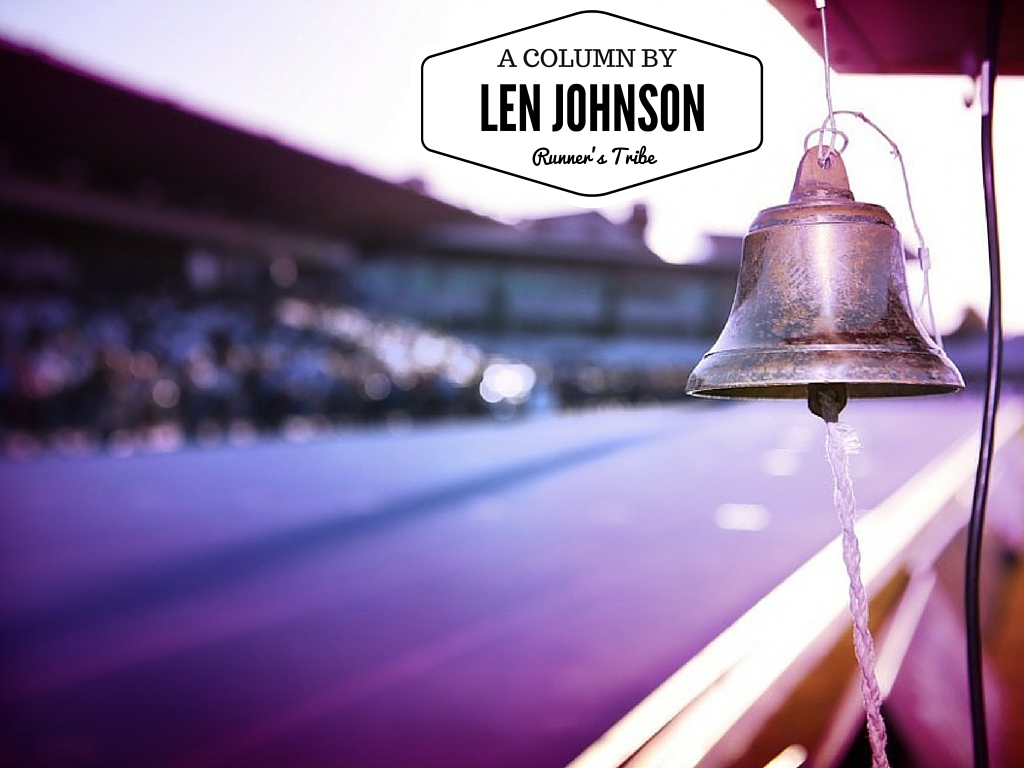Seat by the water-jump
Back in the good old days of Melbourne interclub, when every distance runner had to compete in the steeple for club points, you could always find the ghoulish type of spectator hanging around the water-jump.
Given the rudimentary nature of most steeplers’ hurdling technique, falls at the water-jump were unfortunately common. I speak from personal pain. Your correspondent once entered the water face first. The fact that this was in the Victorian championships heats – and, therefore, whilst (over-) reaching for a higher goal – was of little consolation.
Others took evasive/protective action. One bright soul enlivened competition at our venue by running the steeple wearing a diver’s face-mask and snorkel. Presumably he had considered flippers, too, but had not figured out how to run the other 390 metres of each lap in them.
Surely the modern-day equivalent of a seat at the water-jump is any seat at the cut-throat US Olympic Trials (a seat at the actual water-jump is doubled down ghoulishness). It was probably the equivalent way back then, too, when you think about it. In the events in which there are more than three qualifiers – i.e. almost all of them – Olympic hopes are realised and dashed in equal number.
Leave it to the statisticians to tell us whether there were more, less or about the same number of upsets, at the Trials just concluded at Eugene’s Hayward Field, but big names started to hit the ground with a THUD from day one. Literally, in the case of the fall in the women’s 800 metres final which saw Alysia Montano fall, Brenda Martinez all but fall and Molly Ludlow severely inconvenienced.
These three would have been many people’s picks to fill the Rio places. Instead, the unheralded (at 800, anyway) Kate Grace, Ajee Wilson and Chrishuna Williams booked their tickets to Rio. Ludlow finished fourth, just 0.04 out of third; Martinez got up to finish sixth (then made the team in the 1500); the luckless Montano, who hit the ground hardest, literally staggered home in over three minutes before being dq-ed for leaving the track.
Then there was the sight of Sanya Richards-Ross, defending Olympic champion, going out in the first-round heats of the 400 metres.

Running the sprint hurdles at US Trials is always like running through a minefield with so many fast contenders that you cannot afford a significant slip. The women’s 100 produced the bigger bombshell when world leader Kendra Harrison – undefeated and 0.26 fastest than anyone else with the four fastest times of the year, could finish no higher than sixth.
Jasmin Stowers, a 12.35 performer, finished eighth, while Dawn Harper-Nelson, gold medallist in 2008 and silver medallist behind Sally Pearson in London, failed to make the final.
Pearson, who is out of the Olympics due to injury, is not the sort of athlete to sit around feeling miserable but, if she is, misery has plenty of company after the US Trials.
The men’s 110 was relatively straight-forward by comparison though Olympic colour writers were surely rending their garments in grief as Aries Merritt – he of the kidney transplant from his sister – crossed the line in fourth place. Daegu 2011 world champion Jason Richardson and David Oliver were other big-name casualties.
The women’s 400 hurdles saw the popular pick, world junior champion Shamier Little, failing to make the final. Little had won the NCAA title on the same track a month earlier in what was then the world-leading time for 2016.
Another NCAA champion, Donavan Brazier, also bit the dust in the men’s 800, as did London fourth placegetter Duane Solomon. Neither made the final. Brazier came from comparative obscurity to win the NCAAs in 1:43.55, but could not make it through the first round at the Trials.

Another walk-up-start for the Rio feature writers – Allyson Felix’s attempt to join Michael Johnson, Valeri Brisco-Hooks and Marie-Jo Perec as an Olympic 200/400 doubler – also deflated when Felix, having won the 400 earlier in the Trials, finished fourth in the 200 final on the last day.
Felix was only 0.01 behind Jenna Prandini (22.53) for the final spot in the team, but the first two – Tori Bowie (22.25) and Deajah Stevens (22.30) were well ahead.
Yet maybe the greatest shock of last weekend came from the other side of the Atlantic, in Amsterdam at the European championships where Renaud Lavillenie ignored cold and windy conditions to enter the pole vault final at 5.75. He failed three times, recording an embarrassing ‘no-height’ against his name, not to mention a prominent ‘?’ against his tactical nous.

Poland’s Robert Sobera (5.60) and the Czech Republic’s Jan Kudlicka (also 5.06, but at the second attempt) thus picked up the gold and silver medals long after pulling on their tracksuits resigned to silver and bronze.
Would have loved to have been there – but even with a seat by the water-jump you can’t be in two places at once.
